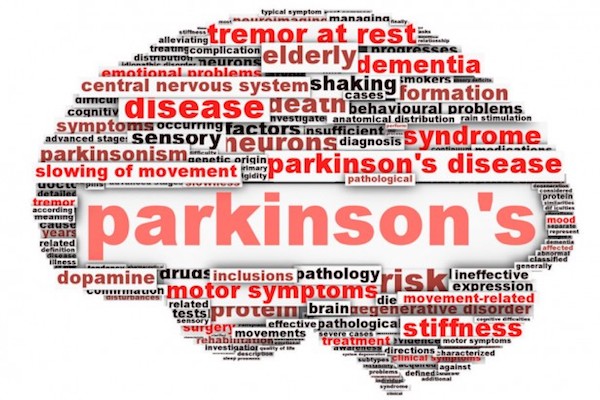Haloperidol induced Parkinson’s disease mice model and motor-function modulation with Pyridine-3-carboxylic acid
DOI:
https://doi.org/10.15419/bmrat.v4i05.169Keywords:
Pyridine-3-carboxylic acid, Haloperidol, motor-function modulation, Parkinson’s disease, MiceAbstract
Introduction: Motor-function modulation through Pyridine-3-carboxylic acid was assessed against. Haloperidol induced Parkinson’s disease (PD) in albino-mice. The objectives of this study were to test the effect of Haloperidol in development of PD, effectiveness of Pyridine-3-carboxylic acid in mice and evaluation of the motor-function changes in mice before and after treatment.
Methods: The study was divided into 3 phases: During Phase-I (randomization), all the subjects were randomly divided into 4 groups and trained for wire-hanging, grip strength, vertical rod and swim tests for 1 week. During Phase-II (disease induction), PD was induced by intra-peritoneal (ip) administration of Haloperidol (HP) in a dose of 1 mg/kg/d for 7 days. Group-A comprised of healthy controls, Group-B (Diseased), Group-C (HP+Pyridine-3-carboxylic acid 7.15 mg/kg/d) and Group-D (HP+Pyridine-3-carboxylic acid15 mg/kg/d).
Results: Pyridine-3-carboxylic acid treatment continued for 5 weeks. During Phase-III the above mention tests were performed and the effects of Pyridine-3-carboxylic acid were recorded. However, in swim test Group D is statistically insignificant as compared to Group B (p=0.284). In recent study, haloperidol is found to be effective in inducing motor function anomalies likewise in Parkinson’s disease including movement slowness, difficulties with gait and balance.
Conclusion: oral administration of Pyridine-3-carboxylic acid improved Motor-function changes in diseased mice. Therefore, it is concluded that Pyridine-3-carboxylic acid may help to alleviate PD symptoms.
References
Bernheimer, H., Birkmayer, W., Hornykiewicz, O., Jellinger, K., and Seitelberger, F. (1973). Brain dopamine and the syndromes of Parkinson and Huntington Clinical, morphological and neurochemical correlations. Journal of the neurological sciences 20, 415-455.
Burger, M.E., Fachinetto, R., Zeni, G., and Rocha, J.B. (2005). Ebselen attenuates haloperidol-induced orofacial dyskinesia and oxidative stress in rat brain. Pharmacology Biochemistry and Behavior 81, 608-615.
Chauhan, A., Chauhan, V., Brown, W.T., and Cohen, I. (2004). Oxidative stress in autism: Increased lipid peroxidation and reduced serum levels of ceruloplasmin and transferrin-the antioxidant proteins. Life sciences 75, 2539-2549.
Creese, I., Burt, D.R., and Snyder, S.H. (1976). Dopamine receptor binding predicts clinical and pharmacological potencies of antischizophrenic drugs. science 192, 481-483.
Elkashef, A.M., and Wyatt, R.J. (1999). Tardive dyskinesia: possible involvement of free radicals and treatment with vitamin E. Schizophrenia bulletin 25, 731-740.
Fernagut, P.O., Diguet, E., Labattu, B., and Tison, F. (2002). A simple method to measure stride length as an index of nigrostriatal dysfunction in mice. Journal of neuroscience methods 113, 123-130.
Gurakar, A., Hoeg, J.M., Kostner, G., Papadopoulos, N.M., and Brewer, H.B. (1985). Levels of lipoprotein Lp (a) decline with neomycin and niacin treatment. Atherosclerosis 57, 293-301.
Hirtz, D., Thurman, D., Gwinn-Hardy, K., Mohamed, M., Chaudhuri, A., and Zalutsky, R. (2007). How common are the “common” neurologic disorders? Neurology 68, 326-337.
Kempster, P.A., Hurwitz, B., and Lees, A.J. (2007). A new look at James Parkinson's Essay on the Shaking Palsy. Neurology 69, 482-485.
Klein, T.J., and Lewis, M.A. (2012). A physical model of sensorimotor interactions during locomotion. Journal of neural engineering 9, 046011.
Klockgether, T. (2004). Parkinson’s disease: clinical aspects. Cell and tissue research 318, 115-120.
Kobayashi, T., Araki, T., Itoyama, Y., Takeshita, M., Ohta, T., and Oshima, Y. (1997). Effects of L-dopa and bromocriptine on haloperidol-induced motor deficits in mice. Life sciences 61, 2529-2538.
Manikandaselvi, S., Mahalakshmi, R., Thinagarbabu, R., and Angumeenal, A. (2012). Neuroprotective activity of S-Allylcysteine on Haloperidol induced Parkinson’s disease in albino mice. Int J Pharm Technol Res 4, 669-675.
Molina, J., Jiménez‐Jiménez, F., Navarro, J., Vargas, C., Gomez, P., Benito‐León, J., Ortí‐Pareja, M., Cisneros, E., and Arenas, J. (1996). Cerebrospinal fluid nitrate levels in patients with Parkinson's disease. Acta neurologica scandinavica 93, 123-126.
Morris, M.C., Evans, D.A., Bienias, J.L., Scherr, P.A., Tangney, C.C., Hebert, L.E., Bennett, D., Wilson, R.S., and Aggarwal, N. (2004). Dietary niacin and the risk of incident Alzheimer’s disease and of cognitive decline. Journal of Neurology, Neurosurgery & Psychiatry 75, 1093-1099.
Naidu, P.S., Singh, A., and Kulkarni, S.K. (2003). Quercetin, a bioflavonoid, attenuates haloperidol-induced orofacial dyskinesia. Neuropharmacology 44, 1100-1106.
Pavan, T., Manasa, K., Tamilanban, T., and Alagarsamy, V. (2015). Effect of Methanolic extract of Canscora decussata on Haloperidol-Induced Motor deficits in Albino mice. Int J Pharm Sci Rev Res 35, 7-11.
Pongiya, U.D., Kandanath, B.M., and Rao, Y.R. (2014). Efficacy of hypericum hookerianum in reversing the symptoms of haloperidol induced tardive dyskenesia, catatonia and catalepsy in swiss albino mice-behavioural analysis report. World Journal of Pharmacy And Pharmaceutical Sciences 3, 1682-1705.
Rahman, M., Muhammad, S., Khan, M.A., Chen, H., Ridder, D.A., Muller-Fielitz, H., Pokorna, B., Vollbrandt, T., Stolting, I., Nadrowitz, R., et al. (2014). The beta-hydroxybutyrate receptor HCA2 activates a neuroprotective subset of macrophages. Nature communications 5, 3944.
Scholtissen, B., Verhey, F., Steinbusch, H., and Leentjens, A. (2006). Serotonergic mechanisms in Parkinson’s disease: opposing results from preclinical and clinical data. Journal of neural transmission 113, 59-73.
Sheidaei, H. (2010). Buspirone improves haloperidol-induced Parkinson disease in mice through 5-HT1A recaptors. DARU: Journal of Faculty of Pharmacy, Tehran University of Medical Sciences 18, 41.
Wang, S., Hu, L.-f., Yang, Y., Ding, J.-h., and Hu, G. (2005). Studies of ATP-sensitive potassium channels on 6-hydroxydopamine and haloperidol rat models of Parkinson's disease: implications for treating Parkinson's disease? Neuropharmacology 48, 984-992.
Zaidi, A.A., Khan, T.A., Shakir, L., Khan, M.A., Yousaf, M., and Ali, A. (2016a). Evaluation of C. cassia Effectiveness in Behavioral Modulation of Haloperidol Induced Parkinson’s Disease (Mice Model). British Journal of Pharmaceutical Research 6, 1-7.
Zaidi, A.A., Shakir, L., Khan, T.A., Khan, M.A., Ali, A., and Rehman, A.U. (2016b). Haloperidol leads to torse de pointes in schizophrenic pool. European Journal of Pharmaceutica And Medical Research 3, 84-91.

Downloads
Published
Issue
Section
License
Copyright The Author(s) 2017. This article is published with open access by BioMedPress. This article is distributed under the terms of the Creative Commons Attribution License (CC-BY 4.0) which permits any use, distribution, and reproduction in any medium, provided the original author(s) and the source are credited.
